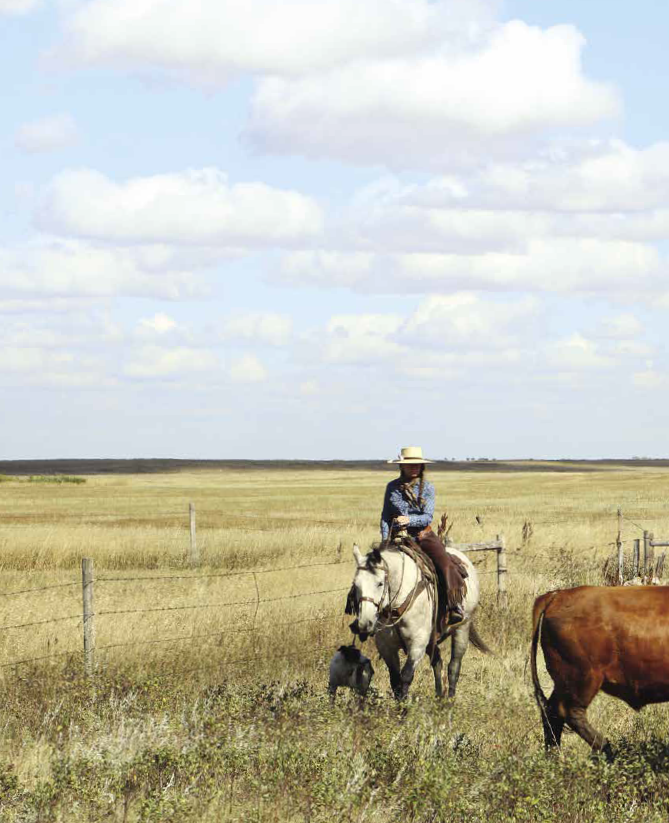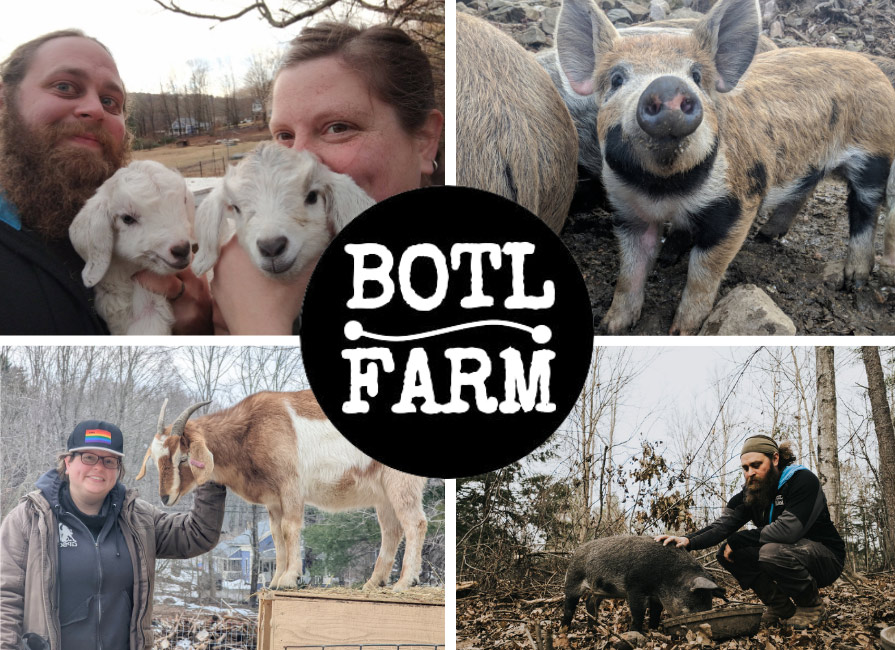Soil nutrient management is a vital part of regenerative farming and applying climate-smart practices can…

In Control Of Our Impulses
What defines success when we are working cattle? Years ago success for me was just getting the job done. Now, success is about specific outcomes I want to achieve. At the end of the day, regardless of techniques, do’s and don’ts or rights or wrongs, they are all academic if the outcome isn’t achieved.
The outcome I strive for now is calm, relaxed cattle. When I pressure cattle to ask them to move or turn, slow down or speed up, I want them to respond in a calm, voluntary manner. When a cow walks calmly through the gate into the corral or onto a stock trailer or out of the squeeze; or a herd walks calmly into a new pasture and they put their heads down grazing, that is my definition of success. To do this, I had to learn to take my cues from the cattle. I had to learn to listen to them so I could be in the right place at the right time and in the right manner.
Self-awareness
Getting cattle to do what we want can be quite a challenge. There are times when cattle truly are not interested in going along with our plan. There are also times when, in our efforts to get them to do what we want, we end up being in their way without even knowing it. On the surface this may seem rather unlikely—and 30 years ago if anyone had told me that I was the cause of many of the problems I was having moving an animal or a herd, I wouldn’t have believed them. It is always easier to blame the cattle, the dog, our spouse, kids, our help, the weather or various other circumstances for the problems we are having working our cattle. But if we are going to have consistent success handling cattle, it is imperative that we become acutely aware of counterproductive positioning, pressure and/or timing. Otherwise we will be doomed to struggle from our own errors.
Negative associations
Something people often feel compelled to do is increase the pressure on cattle the closer they get to the destination, whether it’s the gate, the corral, the barn or the back of the stock trailer. The closer we get the more you start feeling the anxiety of “I sure hope we don’t lose them now”—and the more pressure we instinctively want to apply. Without even knowing it, we start to push the cattle harder as added insurance. After all, no one wants to get to the gate, corrals, barn door or stock trailer only to have the cattle turn around and run off. Just when the animal is at the threshold is when we feel the strongest urge to rush the cow: to slap, poke or prod her to “make sure” she goes. It is almost an instinctive response and easily becomes a habit.
Whether she goes or not, we have communicated to her that the closer she gets to where we want her, the more pressure she’ll experience—in other words, the more unsafe her life becomes. Then we assume that the cows don’t want to go there because they are afraid of [“whatever”].
It is something I observe everywhere I go, whether at places with thousands of head of cattle or with 10. We unintentionally teach our cattle that the places we want them to go are not safe because of the stress we create for them.
I am not saying there are not circumstances where more pressure isn’t required. But the question is: are the cattle slowing down or on the verge of stopping, signaling the need for more pressure? If we are just pushing the cattle harder in response to our own insecurity or impulse there is a high probability of unintended consequences that can result in the moment, and that stress can accumulate over time.
Trust and respect
Some people believe all that is necessary to handle cattle successfully is enough kindness, compassion and patience. Yes, a compassionate heart is essential as a foundation for patience when working with animals. But if a cow’s mind is firmly fixed elsewhere, we can whisper all the sweet nothings we want: it will be to no avail! If a bull’s mind is on cycling cows, sweet nothings will not walk him home. Nor will it prevent calves from running back to find Mom or get cows to go pair up with their calves if fresh spring grass is on the menu after a long, cold winter on dry hay.
What will work in all these situations is an approach to cattle handling that establishes enough trust and respect that the cattle will voluntarily yield to your position and pressure to go when and where you choose. If cattle are going to yield to your position in a calm responsive manner they must trust you and they must respect you. If you observe the hierarchical social structure of a herd you will know that the boss cow does not establish or maintain preferential access to the best of all things in her world without firmly establishing and maintaining respect from the rest of the herd.
Observation is the key
The reality is that the majority of cattle handling problems actually stem from instinctive human behaviors and it is imperative that we become aware of these impulses and tendencies around livestock so we can avoid the unintended consequences. Over the years I have had plenty of folks explain to me that their cows don’t want to do this or that because of “X, Y or Z”; my response is that while this may be true, it may also be that the cows want to avoid the human commotion that they associated with those specific locations. Several times I have been told that “the cattle won’t go into the corral.” But then I have worked their cows and have walked them right into the corral with no problem, where they stand there calm and quiet.
Whether we are aware of it or not, every time we are handling our cattle we are training them. Training them to be more trusting, responsive and controllable—or less trusting, less responsive and less controllable. Becoming aware of the effect we have on our cattle when we are working them requires that we observe how they respond to us, what are they telling us. If we are listening they will tell us what we need to know to be in the best position possible at the right time and with the right kind of movement. Once we are aware of—and in control of—our instinctive behaviors we will be better equipped to handle cattle in a manner that gets the job done efficiently and safely, and with minimum stress.
Further information
Dylan Biggs offers regular practical seminars on low-stress livestock handling, including: introductory one-day seminars; intensive two- day cattle handling clinics; advanced cattle handling clinics; and custom cattle handling clinics. Find out more at dylanbiggs.com or call 1-888-857-2624. Watch Dylan in practice in a Canadian Centre for Health & Safety in Agriculture video: youtube.com/watch?v=45jAC5PEqTI
How to Corral OK
Cattle that are nervous and flighty in corrals are almost always behaving that way due to the residual nervousness of the ‘pasture gather, move and penning’ experience. The behavior in the corral is an indication and reflection of what went before the corral. If the milk is spilled getting to the corral it can be tough to remedy how the cattle behave in the corral itself. How you work them can make it worse, but even if one is very conscientious, they are not going to calm down right then and there.
Let’s assume the location is the gate into the corrals. Ideally the cattle will be comfortable coming to and going through the gate into the corral. We don’t want them to associate the gate with fear or anxiety, yet that is what we risk if every time they get close to the gate we get anxious and start pushing harder, especially if we start making a commotion with noise and arm waiving to get them to go through the gate. We want them to want to be there but because of impulse we can easily do a good job of training them to actively avoid the gate. Maintaining a calm confident demeanor in all situations is ideal.
The next impulse that is often acted on in combination with pushing harder is the impulse to push directly into the rear of the herd from behind. What this risks if this is sustained for any time at all is flaring out the side of the herd which will stop your movement and or worse the lead will flare out and in no time the herd is turning around and coming back on top of you. All of this can happen in short order and happen as a result of our actions, yet we invariably blame it on the cattle.
Authors: Dylan and Colleen Biggs raise Certified Grassfed by AGW beef cattle and sheep and Certified Animal Welfare Approved by AGW pigs at TK Ranch in Alberta. Visit tkranch.com



